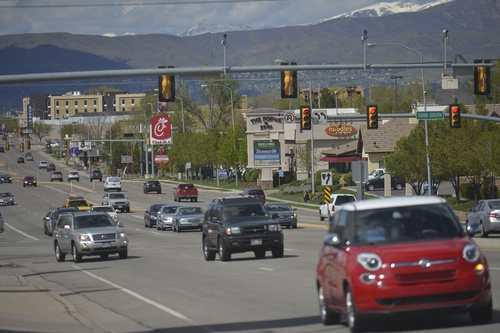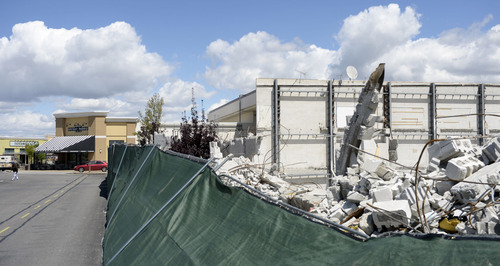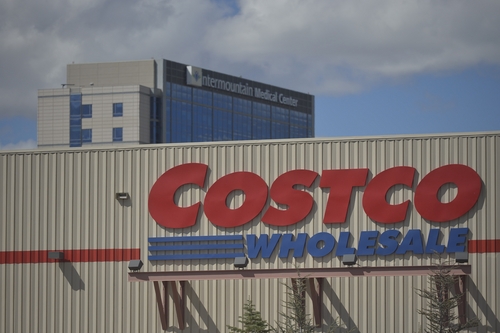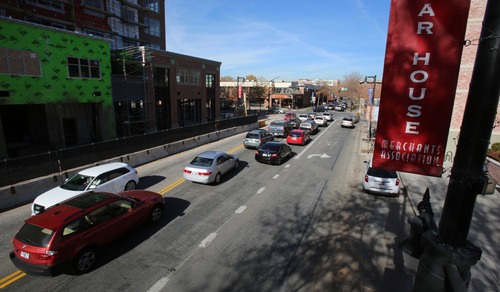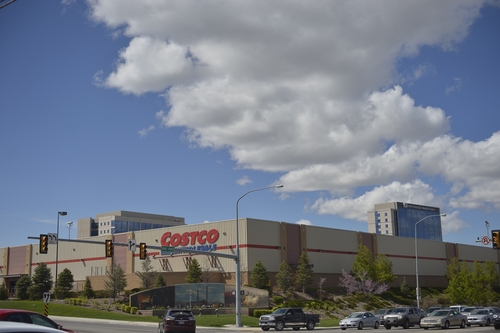This is an archived article that was published on sltrib.com in 2014, and information in the article may be outdated. It is provided only for personal research purposes and may not be reprinted.
Cities in the Salt Lake Valley vary wildly on how friendly and cost effective they are for real-estate developers proposing new retail, office and industrial projects, says a new report card.
Draper and West Jordan both ranked high for developer relations, according to the industry-commissioned study. The two rapidly growing cities earned A-minuses in a composite score for customer service, website access, ease of use, timeliness of approval and lack of red tape for new developments.
Murray drew a D-plus for developer friendliness, researchers with the University of Utah's David Eccles School of Business found. The midvalley city had the worst grade among the 13 Salt Lake Valley cities and the county government examined, yet at the same time, Murray had some of the lowest development fees.
Draper's community development director called that city's grade "very encouraging." In past years, Draper officials had "heard on the street" of image problems with developers and began a series of meetings last fall to hear "the good, the bad and the ugly," said Keith Morey.
Draper has since changed work schedules for key staffers to make them more accessible. "We've made it one of our top agendas," Morey said. "We think that's very important as to how we do business."
Salt Lake City got a B-plus in the study and West Valley City a B-minus.
Individual city scores and other details in the study, compiled by master's degree students at the U. on behalf of Utah members of the commercial real-estate industry group NAIOP, formally known as the National Association of Industrial and Office Property, were scheduled to be officially released early Thursday.
The study was based on the findings of undercover applicants who posed as developers seeking review for generic project blueprints. The researchers scoured city websites, then called ahead and dropped in at city halls with standard plans in hand, asking for input and cost estimates for mid-level retail, office or industrial projects. The proposals were not tied to a specific site in each city.
"We don't think anyone suspected us," said Abbey Ehman, the project's head researcher who also works at Nimble Real Estate Strategists, a Salt Lake City research firm. "What we really wanted to know is, 'What kind of barriers are some municipalities putting up for development?' "
Ehman, who has experience in site review for new Starbucks stores, said researchers in the U. study had "wonderful customer experiences" in some cities, but they were also met with "unreturned phone calls and, 'There's nobody here today, nobody to help you.' "
Researchers evaluated cities on nine criteria of developer relations, generating a weighted score that favored timeliness. Eleven cities fell in the A or B range, with the average city grade a B. Herriman and Salt Lake County earned a C-plus and C-minus, respectively.
Murray's D-plus related in part to difficulties in finding city offices to file the initial application, poor phone communication and difficulties in calculating fees, researchers said.
Tim Tingey, Murray's director of administrative and development services, declined to comment on the grade until he could study it further.
"I do know that we strive to be customer-friendly and that's what we'll continue to strive for," said Tingey, who oversees Murray's economic development, building and planning departments.
The study, the first of its kind since 2006, found an astonishing variation in total fees charged by cities for commercial developments, including controversial impact fees.
Not only could city fees add massively to the price tags of projects in some cases, and trivially in others, but those charges were often levied by many municipal departments, at times making it exasperating to arrive at a final cost, Ehman said.
Developers, she said, "just want to write one check to the city and they just want to know how much it is. But in many cases, it is very hard to get that final number."
Fees ranged from charges on project applications, engineering studies and building permits to amounts levied per square foot for other impacts, designed to offset a project's burden on city services such as water, sewer, roads and police and fire protection.
Differences in impact fees between cities for the same project was sometimes huge.
Depending on the locale, impact fees added as little as 0.7 percent or as much as 10 percent to a project's total cost, the study found.
Fees were highest for industrial projects, followed by office spaces and retail. In the case of industrial development, the difference between the highest impact fees — Riverton — and the lowest — South Salt Lake — was as much as $393,162, for the same project.
Herriman and Bluffdale levy the highest impact fees for office and retail projects. Riverton, Salt Lake City and West Jordan had the highest fees on industrial developments.
South Salt Lake had among the lowest impact charges for cities in the study for office, retail and industrial projects alike, researchers found.
The study did not examine fees on multifamily residential developments. —
City, Developer Relations Grade, Impact Fee Rank (Lowest to Highest)
South Salt Lake, B, 1st
Murray, D+, 2nd
Midvale, B, 3rd
Salt Lake County, C-, 4th
Sandy, B-, 5th
Taylorsville, B+, 6th
South Jordan, B-, 7th
West Valley City, B-, 8th
Draper, A-, 9th
West Jordan, A-, 10th
Salt Lake City, B+, 11th
Riverton, B, 12th
Bluffdale, B, 13th
Herriman, C+, 14th
Source: Nimble / NAIOP Utah



